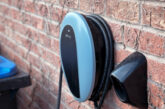
In the previous two articles in this series, Julian Grant of Chauvin Arnoux looked at the importance of considering harmonics in the supply system. This time he turns his attention to another subject that’s of vital importance to electricians: energy efficiency and the IET Wiring Regulations.
Traditionally, the IET Wiring Regulations – which have been around in one form or another for almost 140 years – have concentrated on two things: safety, to protect users of electrical installations from electric shock and other hazards; and capacity, to ensure that equipment and cables are correctly sized to supply the connected loads without danger of overheating. But, since the summer of 2018, the Regs have also highlighted something else: energy efficiency. At the moment, the coverage of energy efficiency in the Regs is tucked away in Appendix 17, and this appendix is designated as ‘informative’ which means that observance of its contents isn’t compulsory.
So, if that’s the case, why should you care about it? There are two very good reasons:
a) Whatever the regulations do or don’t say, we all have a duty to make sure that electrical installations don’t waste energy. Wasted energy means higher energy bills and unnecessary environmental impact.
b) There are plans for a future amendment to the Regs which will include an expanded section on energy efficiency that could well involve compulsory requirements.
What’s to be done?
Appendix 17 makes some very practical recommendations, the first of which is that the load profile for the installation should be determined, to provide accurate information about exactly where and when energy is being used. For new installations at the design stage, this can only be done by calculation but note that the appendix specifically states that its provisions also apply to modifications on existing installations, and in these cases, it will often be possible to carry out actual measurements. Armed with the load profile information, it’s time to look at voltage drops and conductor sizes. This is nothing new, of course, but the appendix notes that to optimise energy efficiency it may be preferrable to use larger cables than those that would have been selected purely on the basis of current carrying capacity. This will reduce losses in the cables and help to ensure that loads are supplied at the correct voltage for efficient operation.
Another aspect to consider is the arrangement of the loads. Where should they be positioned to minimise the length of the cable runs? And, can they be grouped so that non-essential loads can be turned off to reduce peak demand and so that some groups of loads can be controlled automatically? This may be possible, for example, with lighting loads which can be controlled by light sensors so that they are turned on only when needed. In fact, the appendix notes that ‘solutions for lighting control can increase energy efficiency by more than 50%.’
Power factor is also highlighted in the appendix, which suggests that in many cases it may be better to provide power factor correction for individual loads or at local distribution boards rather than to provide overall correction for the whole installation at the main distribution board. Those designing or working on electrical installations are additionally encouraged to look closely at motors and how they are controlled, since using the latest high-efficiency motors and/or installing variable speed drives rather than fixed speed starters can unlock very substantial energy savings.
The value of measuring and monitoring
While Appendix 17 clearly makes a wide range of recommendations, there is one common theme that runs throughout and that is the importance of measuring and monitoring. In addition to recommending an accurate initial determination of the load profile, the appendix states that ‘provision must be made to allow the measurement and recording of energy consumption throughout major parts of the installation…’ and ‘to achieve a design capable of delivering a high level of energy efficiency, all available energy consumption data must be taken into account.’
Overall, there’s no doubt that Appendix 17 puts a lot of the responsibility for optimising energy efficiency in electrical installations into the hands of contractors and electricians. There’s also no doubt that this level of responsibility will further increase when the next amendment to the Wiring Regulations is issued. All of this may seem daunting, but it actually creates opportunities for progressive contractors and electricians to sell more equipment and services, and thereby make more profit. Of course, getting to grips with new requirements may present a few challenges but, if it does, it’s worth remembering that the experienced support team at Chauvin Arnoux is there for you.
To get more guidance on harmonics and energy efficiency click here










